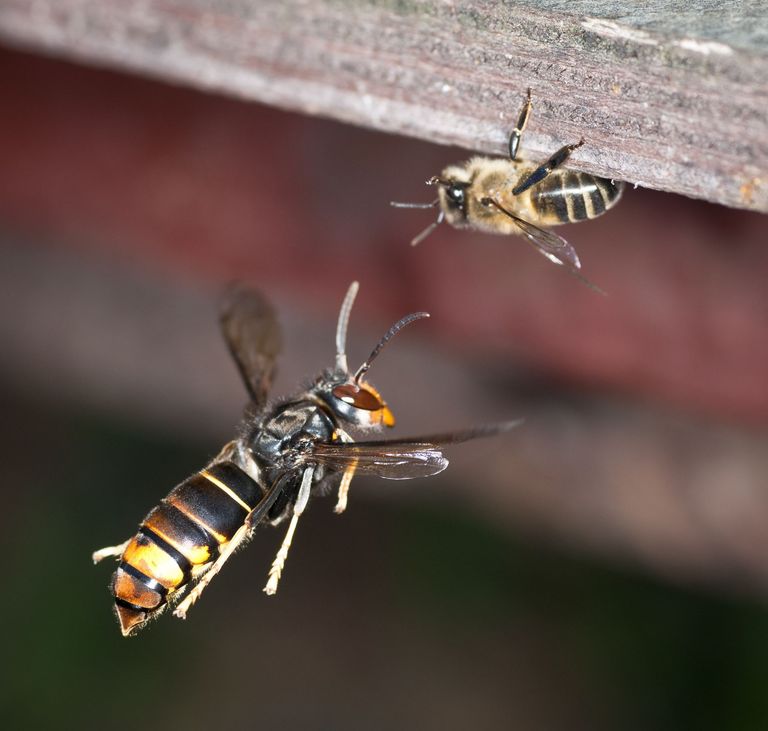The Asian hornet reaches Switzerland
The Asian hornet, a fierce predator of honeybees, was detected for the first time in Switzerland at the end of April.

The Asian hornet (Vespa velutina) was detected in Switzerland in April 2017, when a beekeeper captured a young queen (a reproductive female) in Fregiécourt (Canton of Jura). The observation was reported by the Association of Swiss Beekeepers (Apisuisse). The arrival of the Asian hornet in Switzerland is not particularly surprising: since its first sighting in France in 2005, this invasive species has continued to disperse in the direction of the Swiss border. Originally from China, the Asian hornet has also expanded its distribution in Asian.
The Asian hornet is slightly smaller and much darker than the indigenous European hornet (Vespa crabro). In contrast to the European hornet, the Asian hornet hunts insects during the day. It preys on wild bees, wasps and flies, important pollinators in agricultural systems. Like all social wasps, these species build their nests of cellulose, often high in trees. A colony may include up to 1000-2000 workers, which die along with old queens during the first autumn frosts. Only a few young fertilized queens manage to overwinter, establishing new colonies the following year.
In regions with many beekeepers, honeybees are the main food source for the larvae of the Asian hornet. Adult hornets hover outside of beehives, attacking individual bees as they leave the nest. These attacks may result in significant losses for beehives and it is not yet clear what consequences these attacks may have when other hive pests, such as Varroa mites, are also present. The threat that the Asian hornet may pose to other insects has not yet been evaluated.
Downloads/links
- Le frelon asiatique (Vespa velutina): état des connaissances ...
- Villemant 2009 Evaluation des populations du Frelon asiatique (Vespa velutina, Lepeletier 1836) en France
- Ueno 2014 Establishment of the invasive hornet Vespa velutina (Hymenoptera: Vespidae) in Japan
- Monceau 2014 Vespa velutina: a new invasive predator of honeybees in Europe

